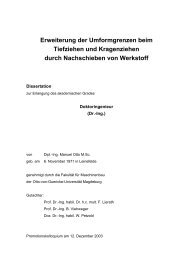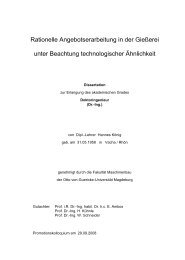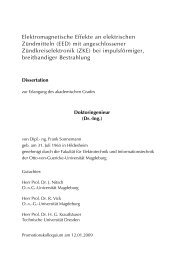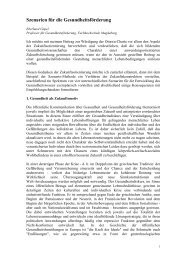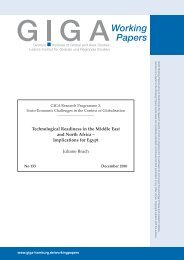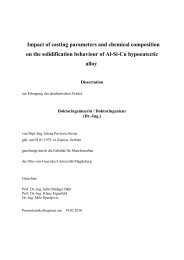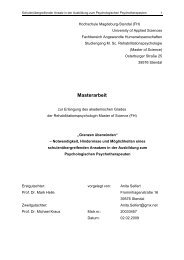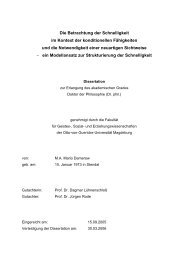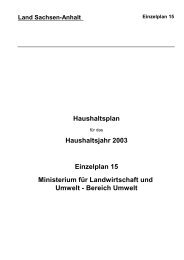Chapter 1
Chapter 1
Chapter 1
You also want an ePaper? Increase the reach of your titles
YUMPU automatically turns print PDFs into web optimized ePapers that Google loves.
achieve their intended objectives if the bank management enjoy effective protection rates exceeding 100 percent<br />
does not change and if the policy environment does not (Lahouel 1995 and GATT 1994).<br />
promote competition. Although modest divestiture 3. The Uruguay Round and the Multifiber agreements (of<br />
(through selling some shares to the public) has taken place, which the EU is a signatory) will reduce Tunisia's preferenthe<br />
government needs to find core shareholders that can tial access to the EU market for most agricultural products,<br />
appoint critical board members, fill senior management and textiles, over the next ten years, as the EU reduces its<br />
positions, and run the banks after divestiture. With the tariffs on all industrial products and converts its NTBs for<br />
deepening of the financial system, the Government (with its agricultural imports to lower tariffs (see Rutherford,<br />
other government partners) needs to either reorient the Rutstrbm, and Tarr and Lahouel 1995).<br />
development banks' activities, close some, or link some of 4. These percentages apply to the manufacturing and agrithem<br />
up with commercial banks. culture sectors which together account for only about 35<br />
Tunisia's financial sector is becoming increasingly sophis- percent of total GDP Cereal prices, while not officially conticated.<br />
Recent reforms have encouraged investors and the trolled, are determined by the state's support price. The<br />
development of longer-term financial instruments in the prices of most services and nonmanufacturing goods concreation<br />
of SICAVs and in the growth of the stock and bond tinue to be regulated, although price increases in these activmarkets.<br />
The preparation of reforms for institutional ities have significantly reduced the underpricing of many<br />
investors is also underway. This basis, along with a more goods and services (chapter 2 and Lahouel 1995).<br />
active privatization program, will further promote the devel- 5. This section is based on Rama 1995, Hakim 1995, and<br />
opment of a modem, diversified financial system. To deepen Azam 1995.<br />
and increase the efficiency of the capital markets, the fur- 6. The criteria used to measure unemployment in Tunisia<br />
ther liberalization of interest rates, the development of a differ from those commonly used in other countries, and<br />
secondary market in Treasury securities, and the establish- they have changed over time, leading to an overestimation<br />
ment and functioning of appropriate settlement systems are of the growth rate of the labor force. Since the growth rate<br />
aUl necessary. of employment is probably underestimated, the more recent<br />
"unofficial" unemployment estimates include a significant<br />
Notes upward bias. See Rama 1995.<br />
7. This section draws on Dahlman 1994a, b; Levy 1994;<br />
1. Sources for this section include: Lahouel 1995; GATT and Bell and Pavitt 1992.<br />
1994; IDF Grant Study "Free-Trade Agreement Between 8. The cumbersome regulations governing nonagricultural<br />
Tunisia and the European Union" 1995, Rutherford, land titles also pose problems to the functioning of property<br />
Rutstrom, Tarr; and Stanton 1994. markets and the ability to use land as collateral for loans.<br />
2. Under its full membership to the GATT and its partici- Less than 5 percent of properties have legal titles.<br />
pation in the Uruguay Round, Tunisia enlarged its tariff 9. The Government allows a tax deduction for the full<br />
binding coverage from 15 percent to 53 percent of total tar- amount of the investment for new issues of equity, up to a<br />
iff lines. All items of agriculture have been bound at tariff maximum of 35 percent of net taxable income provided the<br />
rates varying between 25 percent and 200 percent. About equity is held for five years. This represents a huge tax bene-<br />
50 percent of all nonagricultural headings are bound with fit for investors and a loss in tax revenue for the Government.<br />
the range of 27 to 43 percent (excluding textiles which At the same time, the tax code does not specify that the benapplies<br />
a uniform rate of 90 percent beginning in 1996 and efit is available only to investors of publicly traded stock.<br />
declining to 60 percent in 2005. According to the GATT Privately held companies have therefore created subsidiary<br />
TPRM, bound tariffs are still very high for agriculture and closed-end mutual funds (SICAFs) to invest in their own<br />
textiles, and effective protection rates are much higher than companies and at the same time reap the tax benefit. At a<br />
what nominal rates imply. Wearing apparel will continue to minimum, this is a loophole that should be closed.<br />
44 TuNsiS'S GLOBAL INrEGRAnON AND SusTAiABLE DEVELOPMENT STATEGIC CHOICES FOR THE 21sT CENrUmr




